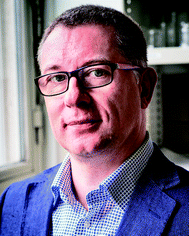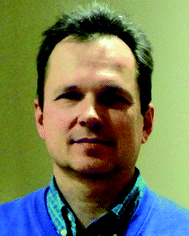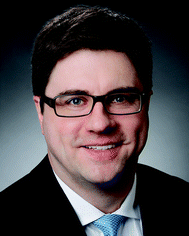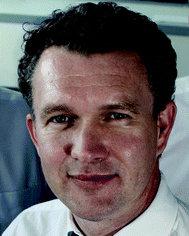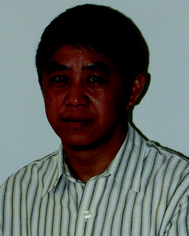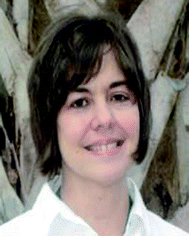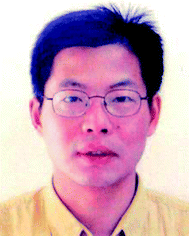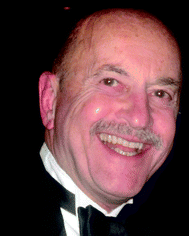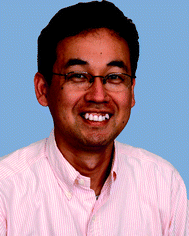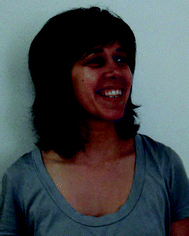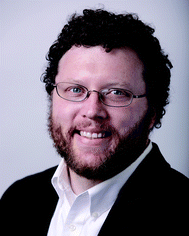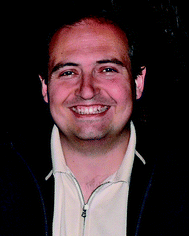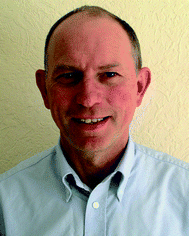JAAS Editorial Board profiles for issue 1, 2015
Frank Vanhaecke, Chair
Frank Vanhaecke (1966) obtained his Ph.D. degree in 1992 from Ghent University (Belgium). He continued carrying out scientific research as a post-doctoral fellow at the same university and also enjoyed a post-doctoral stay at the Johannes Gutenberg University of Mainz (Germany). Since 1998, Frank has been a Professor of analytical chemistry at Ghent University. As an analytical chemist, Frank has a passion for the determination, speciation and isotopic analysis of (trace) elements via inductively coupled plasma-mass spectrometry (ICP-MS). He leads the ‘Atomic & Mass Spectrometry A&MS’ research group that studies fundamentally-oriented aspects of the technique and develops methods for solving challenging scientific problems in an interdisciplinary context. Nowadays, specific topics of research include the direct analysis of solid materials by means of ICP-MS using laser ablation (LA) for sample introduction, the development of speciation strategies based on HPLC-ICP-MS for ADME (absorption, distribution, metabolism and excretion) studies in cooperation with the pharmaceutical industry and high-precision isotopic analysis using multi-collector sector field ICP-MS. Frank is (co-)author of some 275 journal papers, 15 book chapters and has edited a book (together with Patrick Degryse), entitled “Isotopic analysis-fundamentals and applications using ICP-MS”. In 2011 he received a “European Award for Plasma Spectrochemistry” for his contributions to this research field and he was nominated “Fellow of the Society for Applied Spectroscopy – SAS” in 2013. Frank is the Chair of the Editorial Board of Journal of Analytical and Atomic Spectrometry – JAAS.
Dmitry R. Bandura
Dmitry R. Bandura received his M.Sc. in engineering physics (1985) and Ph.D. in technical sciences (1992) at the Moscow Engineering Physics Institute. Most of his career has been devoted to developing mass spectrometry based technologies and instrumentation. He is currently a Vice-President, R & D, at DVS Sciences Inc., the company he co-founded with S.D. Tanner and V.I. Baranov in 2004. He leads the company wide effort to investigate the fundamental science of mass cytometry and translate that into the company's innovative products. Before the formation of DVS, he was a senior research scientist at MDS Sciex, where he advanced the understanding and development of new ICP-MS instrumentation (1998–2005), and a research physicist at GBC Scientific Equipment, where he was fundamental to the development of the commercial ICP-TOF-MS. His special research interests include plasma physics, ion optics, gas-phase ion-molecule chemistry, elemental tagging of biomolecules, and single cell bio-analytical assays.
Carsten Engelhard
Carsten Engelhard was born in Germany (1977). He received his Ph.D. (“Dr rer. nat.”) in analytical chemistry from the University of Münster, Germany, in 2007, and was a postdoctoral associate at Indiana University, USA, with Professor Gary M. Hieftje from 2008–2010. In 2010, Carsten started his independent research (“habilitation”) at the University of Münster, Germany, with Professor Uwe Karst. Since 2013 he has been an Assistant Professor at the University of Siegen, Germany. His research interests include fundamentals/applications of plasma-based techniques, the development of instrumentation, nanomaterials characterization, and ambient desorption/ionization. He has received awards including the Analytical Chemistry Division Award of the German Chemical Society and the “Adolf-Martens-Award” from BAM (Federal Institute for Materials Research and Testing) and Adolf-Martens Fonds, Germany.
Hywel Evans
E. Hywel Evans studied for his B.Sc. in Chemistry with Applied Biology at the University of Plymouth where he graduated with 1st class honours in 1986, followed by a Ph.D. in analytical chemistry under the supervision of Professor Les Ebdon, which he gained in 1989. After this he went to work for Professor Joe Caruso as a postdoctoral research fellow at the University of Cincinnati, USA, where he worked on the development and application of novel plasma ion sources for mass spectrometry. He returned to Plymouth in 1992, and is now Head of the Centre for Chemical Sciences and Reader in Analytical Chemistry in the School of Geography, Earth and Environmental Sciences. His research interests include elemental speciation at ultra-trace levels, applications and fundamental studies of atomic mass spectrometry and development of novel plasma sources for atomic and molecular mass spectrometry. He is the author or co-author of over 60 publications, 8 books, and numerous conference presentations. He was awarded the Hilger Spectroscopy Prize in 1994 and the SAC Silver Medal in 2000, by the Royal Society of Chemistry.
Shan Gao
Shan Gao is a Full Professor for Geochemistry at the China University of Geosciences (Wuhan) and Adjunct Professor for Geochemistry at Northwest University (Xi'an). He received his Ph.D. from the China University of Geosciences (Wuhan) in 1989. His current interests are: laser ablation ICP-MS and its applications to in situ elemental and isotopic analysis of minerals, chemical composition of the continental crust, and chemical exchange between the crust and the mantle. He is author and co-author of approximately 90 original papers in international journals.
Heidi Goenaga Infante
Heidi has over fifteen years experience in elemental and speciation analysis, which started with the award of a Ph.D. from Oviedo University, Spain. She joined LGC as a senior researcher in speciation analysis in 2003. Currently, she is Principal Scientist and Team Leader of the Inorganic Analysis team within the S & T Division. Her key expertise lies in trace element speciation analysis, metallomics research, combined use of elemental and molecular mass spectrometry, size-based element fractionation and the characterisation of “speciated” reference materials and standards. Heidi Goenaga Infante is the UK representative at the Inorganic Analysis Working Group of the CCQM, the international Consultative Committee for Metrology in Chemistry. She is the project coordinator for the EU EMRP NEW03 project on “Chemical and Optical Characterisation of Nanomaterials in Biological Samples” and lead proposer for a number of EU and UK-funded technology innovation projects. She is also a referee for numerous international peer reviewed journals, a member of the international advisory boards of Analytical and Bioanalytical Chemistry and Metallomics, a member of the editorial board of JAAS and, a member of IUPAC.
Wei Hang
Wei Hang studied Instrumentation Engineering as an undergraduate at Zhejiang University, followed by a Ph.D. in Analytical Chemistry at Xiamen University. He was a postdoctoral research associate in Analytical Chemistry at the University of Florida and Los Alamos National Laboratory, and became a technical staff member at Los Alamos National Laboratory in 1999. He joined the Chemistry Department at Xiamen University as a Professor in 2005. His work covers a range of topics, from fundamental studies on plasma sources, such as laser ablation and ionization, glow discharge, and thermal ionization, to the development of mass spectrometric instrumentations. He has published over 100 papers, mostly devoted to solids analysis techniques.
Gary Hieftje
Gary M. Hieftje is Distinguished Professor and Mann Chair of Chemistry at Indiana University in Bloomington, Indiana. His research interests include the investigation of basic mechanisms in atomic emission, absorption, fluorescence and mass spectrometric analysis, and the development of instrumentation and techniques for atomic methods of analysis. He is interested also in the on-line computer control of chemical instrumentation and experiments, the use of time-resolved luminescence processes for analysis, the application of information theory to analytical chemistry, analytical mass spectrometry, near-infrared reflectance analysis, metallomics, and the use of stochastic processes to extract basic and kinetic chemical information. He has won numerous awards in the fields of analytical chemistry and spectroscopy, has held major offices in several scientific societies, and has served on the editorial boards of many major journals. He is the author of over 550 publications, 10 books, and 15 patents. More than 65 students have received doctorates under his direction.
Takafumi Hirata
Takafumi Hirata is a Professor at the Graduate School of Science at Kyoto University. He was educated in inorganic chemistry, geochemistry and analytical chemistry at Tokyo University, and he received the Alan Date Memorial Award in 1989. He was the user of the first ICP-MS instrument (VG PlasmaQuad1) installed in Japan, and therefore, he is well known as the “first torch melter” in Japan. His main research subjects are: (a) age determination of small minerals using the laser ablation-ICP-MS technique, and (b) metallomics using non-traditional stable isotopes. He is now trying to apply the newly developed femtosecond laser ablation technique to metallomics studies.
Gunda Koellensperger
Gunda Koellensperger is an expert in elemental speciation analysis. She dedicates her methodological research to “omics” type investigations of metallobiomolecules, metallodrugs or biomolecules containing heteroelements (e.g., sulfur, phosphorous, selenium) in complex biological matrices that demand novel strategies combining high resolution separation techniques with both elemental and molecular mass spectrometry. She received her Masters and Ph.D. degree from Vienna University of Technology. In 1998 she joined the Division of Analytical Chemistry at the University of Natural Resources and Life Sciences, BOKU Vienna, first as an Assistant Professor (1998–2003), and from 2003 onwards as Associate Professor. In 2011 she was Guest Professor for Analytical Chemistry at the Humboldt University, Berlin. From 2010–2014 she was key researcher of the Austrian Centre for Industrial biotechnology, ACIB, where she was responsible for the core facility of metabolomics. Since March 2014, she has been a Professor at the Department of Analytical Chemistry, University of Vienna. She is Deputy Head of the Center of Mass Spectrometry of Faculty of Chemistry and is currently setting up clean room laboratory facilities for elemental trace analysis.
Steven Ray
Steven Ray is currently an Associate Scientist in the Department of Chemistry at Indiana University in Bloomington, Indiana. He received his Ph.D. from Indiana University in 2003 where he worked as the Senior Mass Spectrometrist for the University before becoming a full-time research scientist in 2004 and joining the graduate faculty in 2012. He has published over 70 manuscripts, and has been recognized with several awards including a 2011 R & D100 award, the 2013 Ron Hites Award, and the 2014 Lester Strock Medal. He also served as the News Editor for JAAS from 2010–2012. His research interests involve novel aspects of analytical instrumentation, including the development of new mass spectrometry instrumentation and methodologies, the application of novel plasmas in spectrochemistry, and the simultaneous use of multiple analytical techniques for chemical analysis.
Martín Resano
Martín Resano obtained his Ph.D. from the University of Zaragoza in 1999. After a post-doctoral period at Ghent University (Belgium), he became Professor of Analytical Chemistry at the University of Zaragoza in 2003. He currently leads the research group “M.A.R.T.E.” and focuses his research on the development of direct methods for the elemental and isotopic analysis of solid samples, mostly using electrothermal vaporization (ETV)-ICP-MS, laser ablation (LA)-ICP-MS and high-resolution continuum source graphite furnace atomic absorption spectrometry (HR-CS GFAAS), topics to which he has contributed with more than 90 publications.
Barry Sharp
Barry Sharp studied chemistry and physics as an undergraduate which was followed by a Ph.D. at Imperial College. After graduating, he joined the staff as a Lecturer in Analytical Chemistry and after 3 years moved to the Macaulay Institute in Aberdeen, eventually becoming head of its Analytical Division. He joined the Chemistry Department at Loughborough University in 1990. His research is focused on the development of elemental mass spectrometry using inductively coupled plasma source and laser sampling methods for mass spectrometry. His work covers a range of topics from fundamental studies on mass spectrometry to the development of specific applications, mostly in the bio-medical and nuclear sciences. He has published over 100 papers and was a founding member of the JAAS Editorial Board, with the late John Ottaway, and a former Editorial Board Chair in which capacity he served for 8 years.
| This journal is © The Royal Society of Chemistry 2015 |

